The “Gin Bubble”- Not About to Burst Any Time Soon!
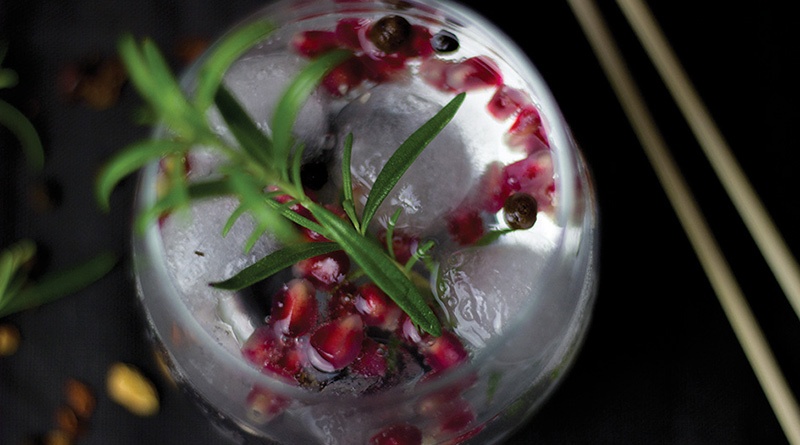
The huge success of gin is a relatively recent phenomenon, with craft gin distillers and premium gin brands almost tripling during the past 6 years, driving a massive trend, especially amongst younger people who previously considered it an old-fashioned tipple.
Gin is the largest spirits drink in the UK and is enjoyed by millions of people on a regular basis. The idea of “the gin bubble bursting”, that suddenly hundreds of thousands of people are going to stop drinking gin, is very far fetched. Other drinks, such as rum, tequila, flavoured vodka, even sherry, have been touted as the next gin, but none of them are yet anywhere near challenging gin. Whilst gin growth is slowing premium flavoured gins like Boe Gin are still growing, and we are looking forward to another summer of gin.
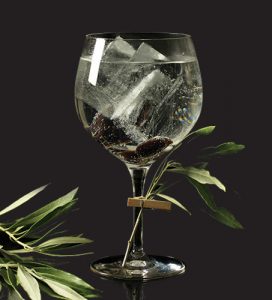 Once called ‘mother’s ruin’, gin was actually incredibly popular in the UK back in the 1700s – in fact, it got somewhat out of hand. There were around 7000 (legal) gin shops in London alone, plus many more distributers acting outside the law, in the 1730s. By 1743, England was consuming 10 litres of gin per person annually. The Gin Act in 1751, plus a greater demand for tea and some bad harvests making gin more pricey, put an end to this massive craze.
Once called ‘mother’s ruin’, gin was actually incredibly popular in the UK back in the 1700s – in fact, it got somewhat out of hand. There were around 7000 (legal) gin shops in London alone, plus many more distributers acting outside the law, in the 1730s. By 1743, England was consuming 10 litres of gin per person annually. The Gin Act in 1751, plus a greater demand for tea and some bad harvests making gin more pricey, put an end to this massive craze.
Fast forward to the 21st century, and the latest figures from HM Revenue and Customs show that British gin sales abroad, in 2019, were worth £672 million – up 9% on the previous year.
Total sales of gin at home and abroad are now worth over £3.2 billion, with the WSTA using the figures to mark one month until the 2020 Budget, as they urge the Chancellor to support British spiritmakers so that they can prosper both at home and abroad.
In 2016 export sales of gin broke the half a billion-pound mark for the first time and since then the popularity of British gin has seen sales continue to soar.
Thanks to the growing interest in British gin, which has been dubbed the ‘ginaissance’, UK gin exports are worth more than double the sales in 2010, which reached just over £288 million.
Britain sends more gin around the world than it does beef, wheat or beer, with gin sales worth 14% more than sales of British beer overseas – sales of British beer totalling £590 million abroad in 2019. In fact, Britain sends more gin around the world than it does beef, wheat or beer, with gin sales worth 14% more than sales of British beer overseas – sales of British beer totalling £590 million abroad in 2019.
Difficult to believe that twenty years ago, gin was seen as the “tumbleweed drinks category”, there was little investment and scarcely anyone was drinking it!
The WSTA, which has championed the cause of British gin in the last few years, is predicting that, far from slowing down, domestic gin sales will smash the 100 million bottle barrier within 12 months, whilst sales overseas will continue to grow.
According to the WSTA’s Market Report, total UK spirit sales last year were worth over £11 billion, with around 400 million bottles sold – meaning that 1 in every 5 bottles of spirit sold in the UK in the last year was gin, and according to a statistic in 2018 1 in 16 consumers drink gin each day, considering it a “primary choice” of alcoholic beverages.
In pubs, bars and restaurants, gin enjoyed even stronger growth, with an incredible 56% increase on last year’s volume sales – nearly 6 million more bottles were sold in the 12 months to March 2019 than in the 12 months to March 2018.
The relentless pace of gin growth shows little sign of slowing down, as Britain’s craft gin producers continue to innovate and experiment with new brands, flavour profiles and colours.
Miles Beale, Chief Executive of the Wine and Spirit Trade Association, said:
“It’s been another phenomenal 12 months for gin and, despite recent reports suggesting the gin bubble may have burst, our numbers suggest the exact opposite – not only is gin’s popularity here to stay, it’s now worth over £3 billion annually.
According to data from Kantar’s Worldpanel division, gin is officially the nation’s favourite spirit (having overtaken whisky) – over a quarter of the population have purchased Gin (including flavoured/gin liqueurs) in the last 12 months, up from just over 10% 4 years ago. Gin brands have also really succeeded in connecting with younger consumers: 4 years ago, 43% of 18-24s told us that they drink gin, it’s now 55%. So what has happened?
Premiumisation & positioning
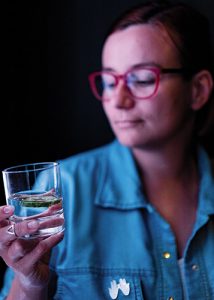 There have been a number of factors that have conspired to make gin a more popular choice with consumers, with the origins being the acquisition of (and subsequent marketing investment in) Bombay Sapphire. It established the notion that there was something you could ‘trade up to’ in gin, says Matt Woodhams, Director at Kantar Consulting. ‘Gin was for the most part a standard category with no widely available mainstream premiumisation route. The beauty of the bottle, and the imagery and visual appeal around Bombay Sapphire, plus the marketing activation, gave it premium back bar appeal.’
There have been a number of factors that have conspired to make gin a more popular choice with consumers, with the origins being the acquisition of (and subsequent marketing investment in) Bombay Sapphire. It established the notion that there was something you could ‘trade up to’ in gin, says Matt Woodhams, Director at Kantar Consulting. ‘Gin was for the most part a standard category with no widely available mainstream premiumisation route. The beauty of the bottle, and the imagery and visual appeal around Bombay Sapphire, plus the marketing activation, gave it premium back bar appeal.’
‘The subsequent arrival of Hendricks, with its distinctive flavour, serve and positioning, and engaging marketing activity bringing the brand to life, added to the interest in premium gin, alongside renewed investment in what had been fairly dormant brands like Beefeater and Plymouth.’
Craft gins & better tonics
With gin being comparatively easy to make, a multitude of ‘craft’ gin brands have sprung up, boasting both local credentials and unique flavour combinations that play into the premiumisation trend.
It also gives gin the discernment credentials that craft beer has enjoyed, with the result that there are now over 360 registered distilleries in the UK .
The other new products that have sprung up to improve the gin-drinking experience are quality tonics.
“People go to restaurants and bars to break out of the norm of everyday life, so offering something new and different creates an significant opportunity to surprise and delight,” says Jo Hoets, Director at RUBRO Rooibos Still. “While we have seen an influx of better tonics, there is so much scope for mixologists to use other soft drink mixers to offer unusual twists to industry classics. RUBRO Rooibos Still is a delicious, lower sugar alternative that pairs well with gin and other spirits.”
Customisation & experience
One of the things that helped Hendricks stand out was the custom serve highlighting its unique flavour profile (it’s served with cucumber rather than lime, generally). Woodhams claims this was the beginning of the idea of customisation and personalisation within the gin category, something that was happening in countries like Spain where the theatre of service – gin being poured at the table, into a large ‘copa’ glass filled with ice – was more common.
‘Not so long ago ordering a gin and tonic in the on-trade meant staff would turn around to service it from an optic. It would be in a small Paris Goblet wine glass, and you’d be asked if you wanted ice and lemon. Now, with gin often served in specific glassware, there is far more theatre to the pour, and the whole experience is far more visible, as many more on-trade outlets pour drinks at the bar.’
Again, the impact of quality mixer shouldn’t be underestimated. This, says Woodhams, has put gin in a new category and makes it suitable for more occasions. ‘A quality product, with quality mixers and theatre around the serve makes for a more interesting, exciting, acceptable, and suitable for different drinking occasions,’ says Woodhams.
Kantar Worldpanel Alcovision data shows that we drink gin on the same occasions as we would drink wine – for example with food.
Supply & choice
Gin is, comparatively, easy to make, hence the craft revival. You don’t have to age gin (unlike many other spirits categories) so the production is requires less capital and time. Moreover, the process of flavouring the spirit adds enough value to make this a profitable venture for those ready to get on with distilling – hence the roughly 200 companies distilling gin in Scotland, where the infrastructure and equipment already in place for whisky make this venture very appealing.
In the gin category, the amount of competition has actually been very beneficial. This choice for consumers leads to more visibility, and has also enhanced the idea that a consumer can customise the drink to their personal preferences. ‘Choice is a virtue of the category,’ says Woodhams. ‘It allows customers to be, or be seen to be, more discerning. Different bars and pubs will have a different serve for each gin so the customisation is also very visible, and the proliferation of mixer flavours creates an even bigger choice.’
Interestingly, while people enjoy this perception of choice, most people still choose standard gin and standard tonic – but there are lots of options to support that choice.
Fancy Gin
According to Kantar Worldpanel, flavoured gin has been one of the biggest success stories in recent years. Pink gin’s association with growing categories like spritzes and the light, refreshing aperitivo, as well as Prosecco cocktails, has helped to widen the gin category by expanding the occasions upon which gin is consumed and keeping it very much on trend. The penetration of flavoured gin has grown at 160% year-on-year, testament to both the changing tastes of more adventurous consumers but also the influx of craftier gin products on the market. This has been driven by younger shoppers who are attracted by the sweeter taste, a trend reflected across categories as varied as fruit wines, flavoured vodka, and fruit cider.
New habits in drinking and socialising
According to Woodhams, the way we drink in the UK has changed, and this has made gin (and other spirits) more likely to be chosen than beer. ‘We spend less time in pubs, where the focus has always been on beer. As we opt for less high-tempo experiences (like nightclubs) and spend more time in mid-tempo environments, like casual dining venues, the drinks we are choosing are changing.’
Even in bars and pubs, gin and tonic is a good proposition where you just want one drink, but not beer or wine, or something fresh to kick off the evening. But generally, the drinking ‘Occasion’ has migrated to ‘Modern On-Trade’ – bars, casual dining, restaurants, and bars.
‘Younger people in particular are choosing to drink less but drink better, and as well as being more aware of the health impacts of consuming too much alcohol, they are socialising on social media and not in nightclubs. With an ageing population trend globally it is no surprise that fewer people are going clubbing. Society has shifted from pure hedonism as an attractive way to spend time,’ claims Woodhams. ‘Consumer, commercial, lifestyle, legislative, cultural and social factors are all combining to make us drink less but drink better.’ Kantar Worldpanel data supports this claim, says Crossan. ‘5.4m adults in Great Britain don’t drink alcohol at all now, up from 4m in 2013. 37.5% of under 35s believe that it’s worth paying extra in pubs, bars and restaurants – well above the average for all adults (29.6%). 18-24-year-olds in particular are those that are choosing to drink less, with the average number of alcoholic drinks they’re consuming in an average week falling from 13.5 to 12.4 over the last 4 years.’
Despite the belief that the “bubble will burst”, UK consumers are remaining as faithful as ever to their cherished gin. However, this popularity in this category has brought forth innovation, as consumer interest in an crowded marketplace of uninventive products wanes, increasing numbers of people are turning to an entirely new segment: ultra-premium gins.
Flavoured gins enjoyed a record year in 2018, with a 751% increase in sales in the UK, the research showed.
Boe Gin Adds Apple & Lime to Its Family
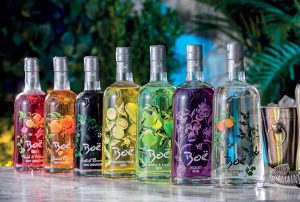 The award winning Boe Gin family continues to be very popular with publicans and gin drinkers in pubs and bars across the UK, and is now sold in more than 16,000 outlets. This range of premium, flavoured gins is backed by heavyweight investment in marketing with Paloma Faith featuring in the advertising, which has led to the brand being the most engaged with gin brand on social media in the UK in 2019.
The award winning Boe Gin family continues to be very popular with publicans and gin drinkers in pubs and bars across the UK, and is now sold in more than 16,000 outlets. This range of premium, flavoured gins is backed by heavyweight investment in marketing with Paloma Faith featuring in the advertising, which has led to the brand being the most engaged with gin brand on social media in the UK in 2019.
Boe Apple & Lime is the latest addition to the range, and is a unique and distinctive flavour which also has an outstanding appearance on the back bar and in the glass. It is stocked by all leading wholesalers and will make a big impact this summer as gin drinkers turn to cool, refreshing flavours.
Visit www.boegin.com
Support for Products with Purpose
 In recent years people have become more educated and vocal about what they expect from the products that they buy. Brands need to meet consumer demand for health, natural ingredients, responsible sourcing and sustainability.
In recent years people have become more educated and vocal about what they expect from the products that they buy. Brands need to meet consumer demand for health, natural ingredients, responsible sourcing and sustainability.
The soft drink industry is seeing an explosion of innovation by new brands offering products with purpose, interesting stories and more wholesome ingredients. One such brand is RUBRO Rooibos Still, a fizz-less thirst quencher infused with Rooibos. This herbal tea grows naturally in only one place on earth: the Cederberg and surrounding mountains in South Africa.
RUBRO has been selling in the UK via Nando’s restaurants since 2012. According to RUBRO Director Jo Hoets, consumer demand is there, however more support is required from the food service industry for these brands.
“There is a huge opportunity to offer customers something different. In our case, the Rooibos story is so unique that it offers a great up-sell, plus a product with lower sugar, and no caffeine, preservatives or colourants,” she says.
RUBRO sources its Rooibos from small-scale farmers in the local rural communities. “Supporting our products adds value to these communities, and therefore offers an opportunity to tell an amazing story,” says Hoets. “Plus the Rooibos delivers both benefits and interesting flavours, giving customers an engaging and wholesome drinking experience.”
Visit www.lighthousebrands.co.uk for distribution details.
Wicked Wolf® Exmoor Gin™
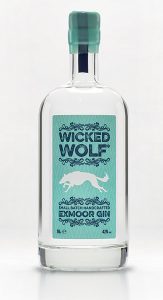 Wicked Wolf® Exmoor Gin™ is a premium craft gin made from 11 botanicals, distilled and blended on the banks of the picturesque River Lyn, North Devon. Passionate about gin, husband and wife team, Pat Patel and Julie Heap, are the faces behind the exciting venture which launched in 2015.
Wicked Wolf® Exmoor Gin™ is a premium craft gin made from 11 botanicals, distilled and blended on the banks of the picturesque River Lyn, North Devon. Passionate about gin, husband and wife team, Pat Patel and Julie Heap, are the faces behind the exciting venture which launched in 2015.
Wicked Wolf Exmoor Gin uses the perfect combination of 11 exotic botanicals producing complex layers of citrus and pepper notes finely balanced with the distinct flavours of juniper and coriander, resulting in a mature, premium spirit. Hibiscus and kaffir lime leaves have been artfully blended with these traditional aromatics creating a familiar traditional flavour with a contemporary – yet – restrained character. Pot distilled in a copper alembic still, Wicked Wolf Exmoor Gin is lovingly blended, filtered, bottled and labelled by hand in exclusive 100-litre batches.
Each aromatic is prepared by hand, infused and distilled separately resulting in 11 individual distillates which are then skilfully blended. This approach allows us complete control over the strength of each flavour, and enables consistency across each batch.
The gin is filtered at each stage of the production process, producing a 42% ABV, smooth, full-bodied and elegant spirit.
Visit www.wickedwolfgin.com
CHAMBORD GIN FIZZ
20ml shot of Wicked Wolf Gin
5ml of Chambord
10ml Lemon Juice
Top up with soda water or tonic
Free Your Spirit with Mermaid Gin
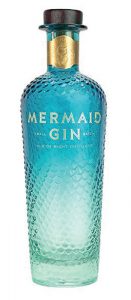 Mermaid Gin is hand-crafted on the Isle of Wight using ten ethically sourced botanicals. A small batch spirit, it delivers a smooth yet complex blend of fresh organic lemon zest and peppery grains of paradise, with a hint of sea air from locally foraged, fragrant rock samphire – for a refreshing and invigorating serve.
Mermaid Gin is hand-crafted on the Isle of Wight using ten ethically sourced botanicals. A small batch spirit, it delivers a smooth yet complex blend of fresh organic lemon zest and peppery grains of paradise, with a hint of sea air from locally foraged, fragrant rock samphire – for a refreshing and invigorating serve.
Working with column stills for a smoother spirit, the process is tightly controlled capturing only the hearts of each batch – the sweet spot of any distillation. This avoids the harsher elements found in the heads and tails to create a pure gin that is perfectly balanced.
We preserve the environment of mermaids by supporting marine conservation projects and presenting our gin in a plastic free package.
Visit www.isleofwightdistillery.com
Alternatively call 01983 613653.
